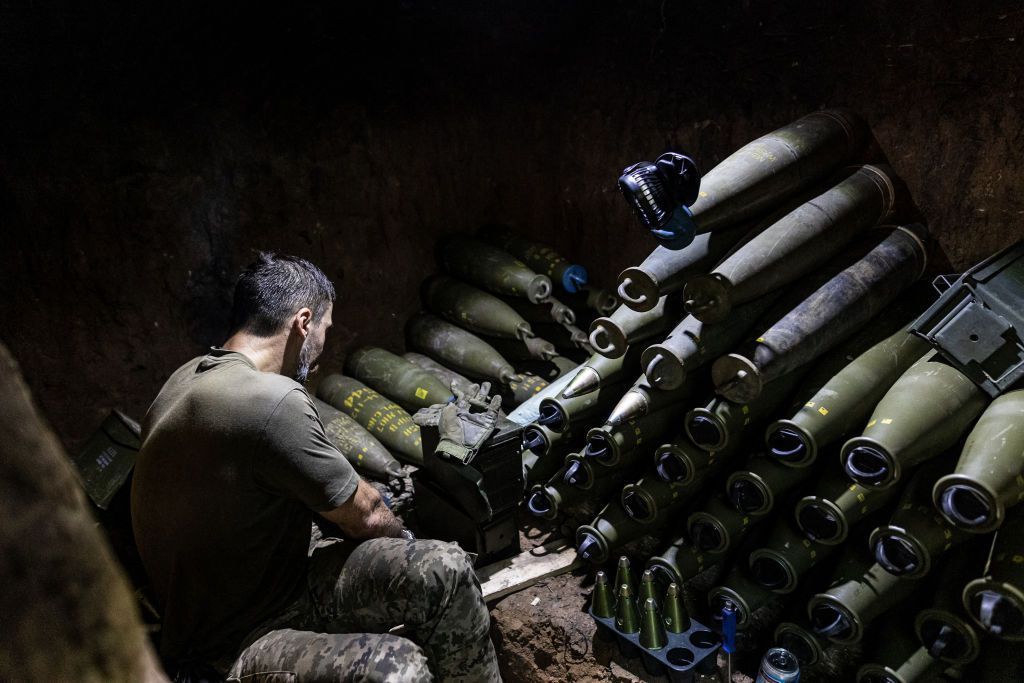With arrival of spring, a look at Russia's winter strikes on Kyiv

A second full winter of full-scale war in Ukraine has passed, culminating with yet another Russian missile strike on Kyiv in the early morning of March 21.
The latest attack injured at least 13 people, according to the latest information.
In total, at least 45 people were killed in the capital, and more than 130 were wounded by Russian attacks over the winter of 2023-2024.
Yet, the nature of Russia's attack strategy vis-a-vis Kyiv – and Ukraine's defensive capabilities – has changed significantly since the previous winter.
Moscow set out on a prolonged campaign of strikes against Ukraine's energy infrastructure throughout the country that began in October 2022 and extended until the present day. While the strategy failed in its goal of knocking out the grid, it caused considerable damage to critical infrastructure and inflicted dozens of casualties.
Winter's deadliest strikes on Kyiv
By a considerable margin, the deadliest Russian attack on the capital was on Dec. 29, 2023, in which scores of missiles and drones struck Kyiv and other cities around the country. At least 33 people were killed and more than 35 injured in what Mayor Vitali Klitschko called the deadliest attack on civilians in Kyiv since the beginning of the full-scale invasion.

After the death of an injured man in the hospital, the death toll of another Russian strike on Kyiv on Feb. 7 rose to six. More than 50 people were wounded in the attack. The majority of the casualties was caused by a missile that hit a highrise apartment building in Holosiivskyi district, which subsequently started a fire.
Russia launched almost a hundred missiles and at least 35 Shahed-type drones against Kyiv and Kharkiv on Jan. 2, killing at least three people and wounding more than 50.
These Russian strikes on the capital were among countless attacks on civilian targets throughout the country over the past winter, such as the March 15 missile strike on Odesa that killed at least 21 people and injured more than 7o.
Front-line towns and cities are particularly vulnerable to Russian strikes; less protected by advanced air defense systems and within range of a wider variety of Russian weapons. Eleven people, including five children, were killed after a barrage of S-300 missiles hit the town of Pokrovsk and the Myrnohrad community in Donetsk Oblast on Jan. 6.
A change in strategy?
As the winter of 2023 approached, there was concern among Ukrainian and foreign officials about a potential repeat of Russia's strategy from the previous year, in which around half of the country's energy infrastructure was damaged.
President Volodymyr Zelensky urged Ukrainians to remain resilient in December 2023 ahead of the anticipated uptick in attacks on energy infrastructure. While Russian strikes continued unabated, Ukrainian military intelligence and the U.K.'s Defense Ministry said a month later that Russia's attack strategy had most likely shifted toward targeting Ukraine's military-industrial capacity.
But as Zelensky and others told Ukrainians to prepare for another winter of Russian attacks, it was clear that Ukraine's defensive capacity had increased from the previous year.
Ukraine received advanced air defense systems from its Western allies, such as the Patriot, IRIS-T, and Skynex. The systems have contributed to Ukraine's ability to intercept equally advanced Russian weapons, such as the vaunted Kinzhal missile.

Prime Minister Denys Shmyhal said at the end of January 2024 that Ukraine's energy sector was stable and that Russian attacks had largely failed to disrupt the electrical grid.
Yet, the U.N. said in January that civilian casualties had actually increased amid the apparent shift in Russian strategy. The uptick in deaths and injuries reversed the downward trend that had begun in early 2023, the U.N. said.
The Patriot and other advanced systems had successfully changed the nature of Ukraine's air defense and helped protect the skies over Kyiv and other cities. Despite the attacks listed above, countless Russian missiles and drones were prevented from getting through.
However, a Patriot interceptor missile can cost between $2-4 million. Ukraine is currently in the midst of perhaps its biggest foreign funding crisis since the beginning of the full-scale war as the impasse on U.S. aid stretches into its sixth month.
Deadlock in Congress, dwindling stocks
With the U.S. presidential election coming up in November, American politics have been increasingly focused on domestic issues. Aid for Ukraine has been stuck since the fall of 2023, either by design or as unfortunate collateral damage.
The lack of U.S. aid, particularly felt in the lack of artillery shells, has contributed to Ukraine's loss of the key frontline city of Avdiivka in February. Ukraine's advanced air defense systems, with their expensive munitions, have also been impacted.
White House and Pentagon officials told the New York Times in January that the U.S. would likely be unable to keep Ukraine's Patriot systems supplied with missiles without further aid approved by Congress.
In the intervening months, the situation has only worsened. The Washington Post reported on March 15, citing unnamed Western officials, that the shortage of air defense munitions may soon force Ukraine to adjust its strategy regarding Russian missiles.
Currently, Ukraine's air defense aims to shoot down four out of every five Russian missiles aimed at its cities, but the target may have to drop to one out of every five if further aid is not approved.
Despite hopeful predictions in late 2022 and early 2023 that Russia had used up much of its stockpile of missiles, the attacks have continued. Russia has moved its economy onto a war footing and bolstered its arsenal with weapons deliveries from Iran and North Korea.
Even with advanced air defense, Kyiv is still vulnerable. Other cities are even less protected. While Ukraine's track record of air defense over the last winter demonstrates an increased ability to stop Russian attacks, Russia has also changed its strategy and continued to inflict civilian casualties in the capital and beyond.













